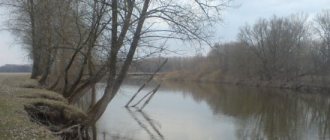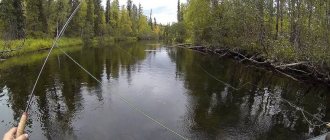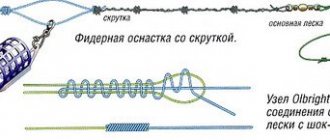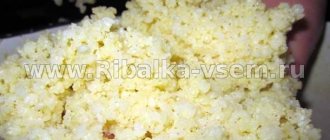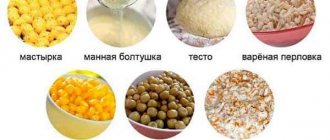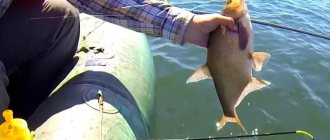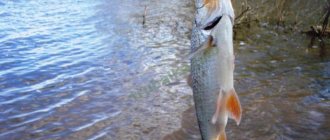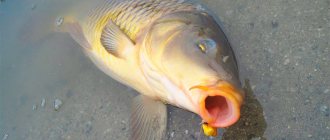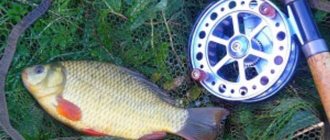Catching bream on a feeder is an exciting and rewarding process. With the help of feeder gear, it is possible to catch large specimens, which are considered worthy trophies even by professional fishermen. Bream is common both on rivers with fast and slow currents, and on lakes or reservoirs. The choice of gear, as well as some features of fishing tactics, depend on the type of reservoir.
Feeder equipment for bream
First of all, you need to select all the elements of gear for catching wary fish in clear autumn water. It is important to choose the right rod for the feeder. The weight of the sinker and the feeder filled with bait should be within the test range of the rod. To catch bream, you can opt for a rod model with a medium action. If it is not possible to use a classic feeder rod, then it can be replaced with a spinning rod with the appropriate characteristics. Alternatively, you can use a Bolognese fishing rod.
To catch large bream, you should choose the right reel for the feeder. A reel is needed not only for transporting fishing line (cord) of the required length. When fishing for fiercely resisting fish, the reel plays an important role. After reeling in the fish with the rod, the line must be placed on the spool in a timely manner. To avoid the unfortunate disappearance of active bream in early autumn during fishing, it is better to install a reel with a friction brake. It is more convenient to use a model in which the friction adjustment is located at the rear of the reel.
What is better to equip the feeder with: braid or fishing line? This question does not have a clear answer. But, when catching bream, it is necessary to take into account the features of the cord or fishing line. If you install a braided line, then you do not need to make sudden sweeping movements when hooking. The cord increases the rigidity of the equipment, and during such hooking you can tear off the weak lips of the bream or simply pull the bait out of the fish’s mouth. The fishing line softens the jerks of the rod, but when using it, you should also not force the fish to land with sharp pulls with the rod raised by 90 degrees or more. For a bream feeder, a spinning cord and fishing line with a load capacity of at least 7 kg are suitable. Practice shows that for catching wary fish in clear water, an inconspicuous fluorocarbon line is excellent.
An important element of the gear is the feeder. Feeder feeders are now available in different capacities and cell sizes. The choice of feeder for catching bream in the fall on a feeder depends on a number of factors:
- When using additional bait, the feeder is equipped with small-sized feeders with small cells;
- If the filler of the feeder plays the role of bait, then you need to use large models with large cells;
- For fishing in the current, feeders with slow leaching of bait are suitable. Models with different volumes, but with small cells are suitable;
- Fishing in stagnant reservoirs is carried out using any feeders. The main thing is that its weight matches the test of the rod.
Behavior and habitats of bream in autumn
Until the first half of September, the weather is usually warm; at this time, autumn bream fishing is no different from summer. Underbreeders lead a gregarious lifestyle, large individuals keep to themselves, but both young animals and their mature relatives are most active at the same hours - from dawn to 10.00. The second feeding trip, as a rule, occurs after 14.00; it can last one and a half to two hours. In general, bites are possible throughout the entire daylight hours, but during the indicated hour intervals the most active bite is observed.
In the second half of the first autumn month, bream begin to gather in small schools, move closer to the wintering pits and intensively accumulate fat for the winter. From mid-September to the first days of October, the fished object fattens, eating everything, from algae and small invertebrates to fry of its own kind. During this period, bream fishing on the river is always productive, even beginners who have no experience behind them are lucky. But such fishing does not last long. When frosts begin, the fish move to greater depths, practically do not move and do not feed. You can still catch it, but to do this you at least need to know its exact location.
At the very beginning of autumn there are no special problems with finding bream, because it can still be attracted and kept at the point with the help of bait. But when the water temperature begins to drop, the bream settle in the holes, and no secret mixtures will help lure them out of there. That is why, with the onset of the first autumn cold weather, the key to successful fishing will be a competent search for a place.
It is important to find the area where these fish are concentrated, and then, through several fan casts, determine the catching point.
When catching bream in the fall on a feeder, an excellent search method would be to cast the tackle to the maximum distance from the coastline, followed by tightening the tackle a few meters. If there are no bites within 10 minutes, you need to pull the feeder with hooks closer to the shore and repeat this action until the fish bites. This method allows you to quickly calculate the distance at which the fish is standing. If bites continue, the line is marked with a marker so that in the future the equipment is lowered to the same point.
Starting in October, especially if it turns out to be cold, the greatest likelihood of finding a concentration of bream will be in the deepest parts of the reservoir with an uneven bottom. It’s worth trying to fish on channel dumps and multi-stage edges. If the time is right, but the fish are not biting, something needs to be done, otherwise the day will be wasted. It is best to try your luck elsewhere; in mid-autumn, search tactics almost always lead to the desired result.
Porridge for bream
Attracting fish to the location of the bait on the hook is facilitated by prepared bream porridge, which is used to fill the feeder feeders. Bait for bream is available in specialized stores. It cannot be said that it is excellent or does not attract bream at all. The fact is that the composition of the finished complementary food is selected for bream fishing in a specific region. Although the taste preferences of fish may differ in different bodies of water located in the same area. Store-bought porridge can be used as a base or as a component of bait for fish prepared with your own hands.
Bream porridge recipe:
- Prepared millet for fishing - one part;
- Breadcrumbs - two parts;
- Crushed cake or ground roasted seeds – approximately 1/10;
- Feed or crushed bloodworms - one pinch;
- Chopped red dung worm - one pinch;
- Flavoring – 2-3 drops. Various types of vegetable oils are used as flavoring agents.
To create a cloud, you can add milk powder to the bream porridge.
The viscosity of the porridge is achieved by mixing purchased paste, or more often by adding soil. For fishing in the current, more viscous baits are suitable. On a slight current, loose porridge for bream is preferable.
Fishing for bream on a feeder in September
In the first half of September, there is still a sufficient food supply for feeding bream. It occasionally moves along the bottom depressions in search of additional food. During this period, it is important to use bait that is attractive to bream. In early September, bream enters the coastal zone at night. Catching bream at night increases the chances of catching a trophy specimen. During the day, bream are caught on hooks in coastal depressions.
The feeder is cast to the edge of the algae in places with a sandy or clay bottom, which is covered with a thin ball of silt. The dusty bait causes the bream to linger in the baited area. While eating complementary food, the bream will not miss the opportunity to enjoy the offered more attractive bait or vegetable fishing bait.
In September, bream bite on hominy, dough, semolina, worms, maggots and bloodworms. “Sandwiches” from the baits and attachments available in the arsenal are good at provoking bream to bite. In the first half of autumn it is still comfortable to fish from a boat. Fishing for bream with a ring increases the likelihood of a catch. Fishing for bream on a feeder in September usually results in good results. A large crucian carp or roach caught in the bycatch will not cause disappointment in September fishing.
Fishing for bream on a feeder in November
After the water temperature drops, the bream moves to the bottom depressions, in which it will remain during the freeze-up period. The activity of bream in November noticeably decreases, but it does not hibernate. In late autumn, bream does not go into shallow water and stays above the bottom surface. The fish continues to search for aquatic insects buried in a thin layer of silt. Fishing for bream on a feeder in November is the most promising in relation to other gear used for catching this fish.
In November, preference should be given to bait of animal origin. In addition to traditional fishing baits, peeled shrimp are used to catch bream. But don’t completely ignore plant baits. It is impossible to predict what will be best for biting bream on a fishing day in late autumn.
For fishing in November, it is advisable to use 3-5 gear. Casts are made throughout the entire available sector. Equipment consisting of several feeders increases the catchability of the feeder. To catch bream on a feeder in November, the so-called crucian killer rig is successfully used. But it is advisable to modify it a little: replace the 5-centimeter leashes with longer analogues, 20-50 cm long.
So, catching bream on a feeder in the fall is promising. The main thing is to properly prepare for fishing. Careful preparation is the key to receiving a lot of positive emotions.
Features of the autumn feeder
When planning to go feeder fishing, you need to know its location in advance - it’s a river or a large lake. After all, in shallow water it is difficult to catch a large specimen. On a large area of water, you need to know places with holes, whirlpools, and snags.
It is more common to fish on narrow rivers, but the catches will be small. Fishermen who often go fishing pay their attention to the places where small rivers flow into wide rivers. There are sometimes great depths here, and the fish stand at the tributary in the hope of the food they bring.
In autumn, especially late, the fish choose their winter places. It is especially pleasant to catch bream and roach on the feeder in the fall. These are “classic” fish species; their behavior can be used to judge the bulk of the fish population.
September
The month is already marked by a drop in temperature. The water becomes clear due to the cessation of growth of aquatic plants. The fish begins to prepare for winter. On the borders of reeds and clear water you can also find pike. Later, when small and medium-sized fish move into the depths, the predator follows them. If an angler wants to catch burbot or pike perch, then they need to look for them in snags.
There are still warm days. At such times, you need to look for fish near the shore, near the fallen algae. As the temperature drops, all this water grass still falls to the bottom, and the fish moves to another place. For example, a pike gets hungry in winter and grabs everything. Without particularly choosing lures and bait.
In the fall, feeder fishing is good on medium rivers. Especially in the places where small ones meet large ones. In such places you can hope to catch chub and crucian carp. These fish do not leave their places as the temperature drops.
October
This month is famous for rain and cold winds. The fish goes deeper. But activity is high, and predators continue to eat. Until the very frosts, you can achieve success near reservoirs with steep banks with overhanging trees.
Places in creeks covered with fallen leaves are attractive for fish. There are roach, perch and rudd here. Bream and silver bream are found in the reservoirs. Their place is a riverbed edge, or a flat bottom with stones.
While at the reservoir, the angler must find a channel or hole; this is where fish are usually found. It will probably stand near fallen trees, stones and other obstacles if there is decent depth.
November
A feeder in November, if all fishing rules are followed, can be successful. True, the water temperature drops to +2-+4 degrees, and the activity of the fish decreases. It is located near the wintering pits; only selected bait will help make it take the bait.
The most important thing for feeder fishing at this time of year is choosing a place with the expected fish. For example, bream gathers in large schools and occupies deep places. But within a day, a school of bream can move several kilometers in search of food. Feeder fishing in late autumn can continue until freeze-up.
